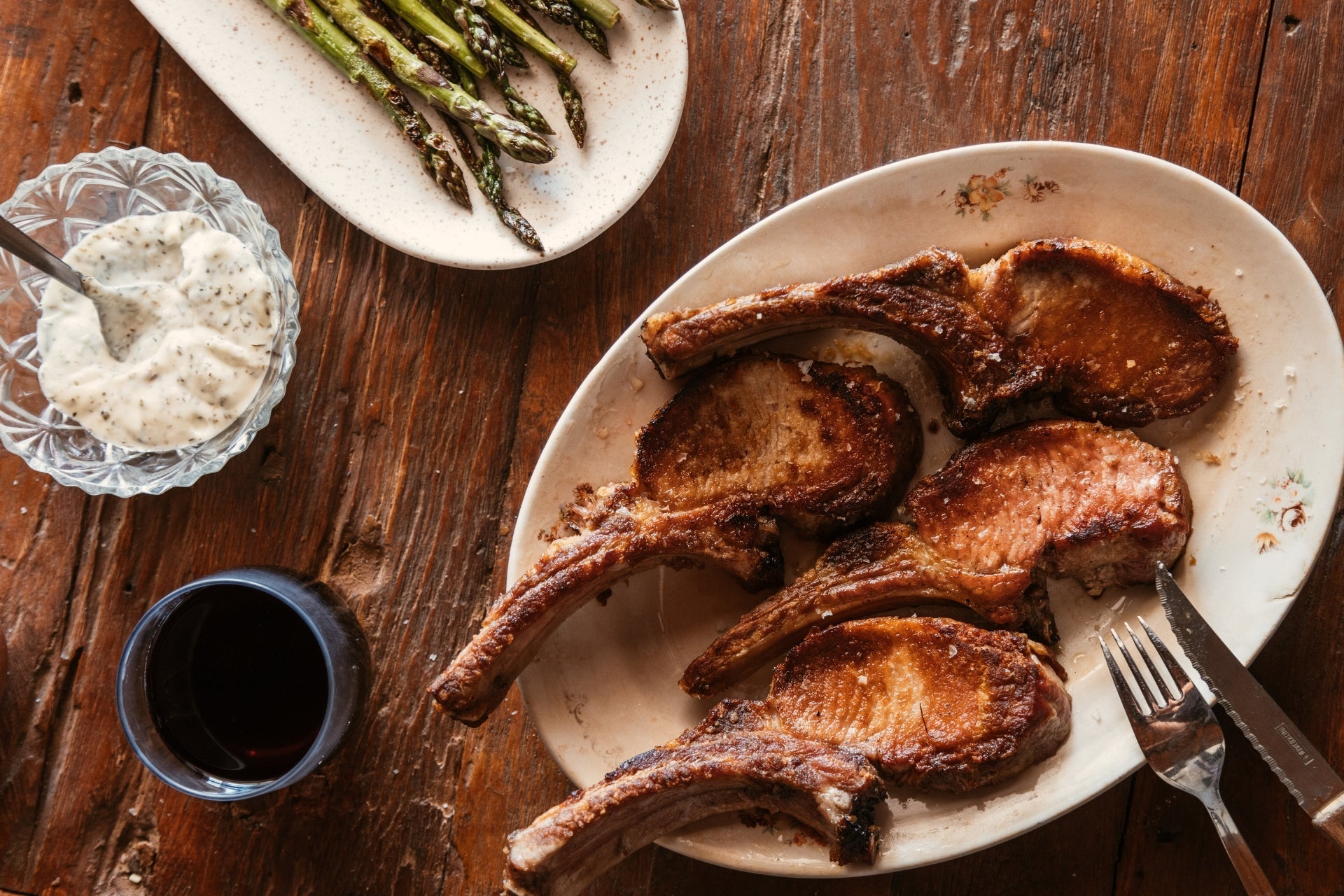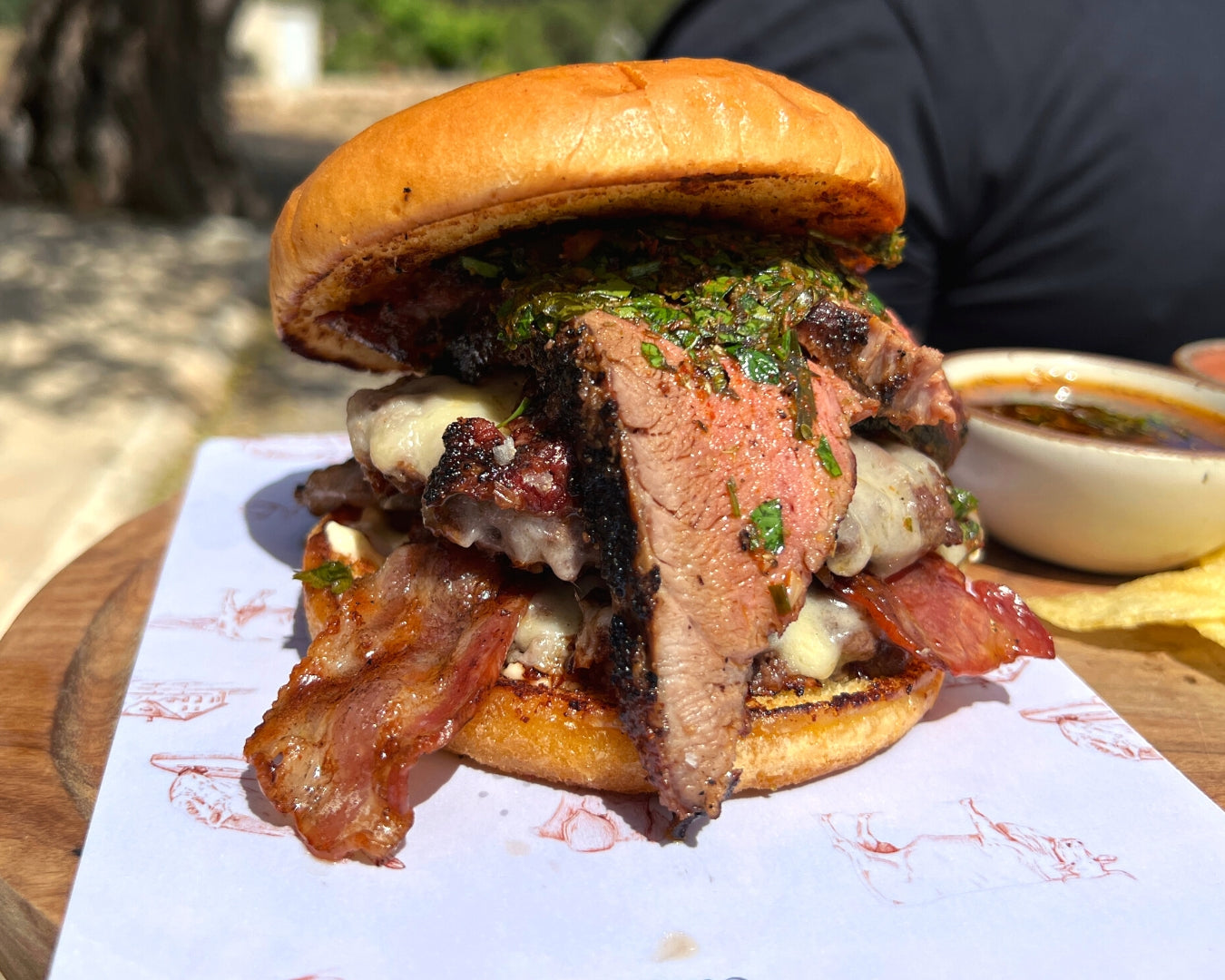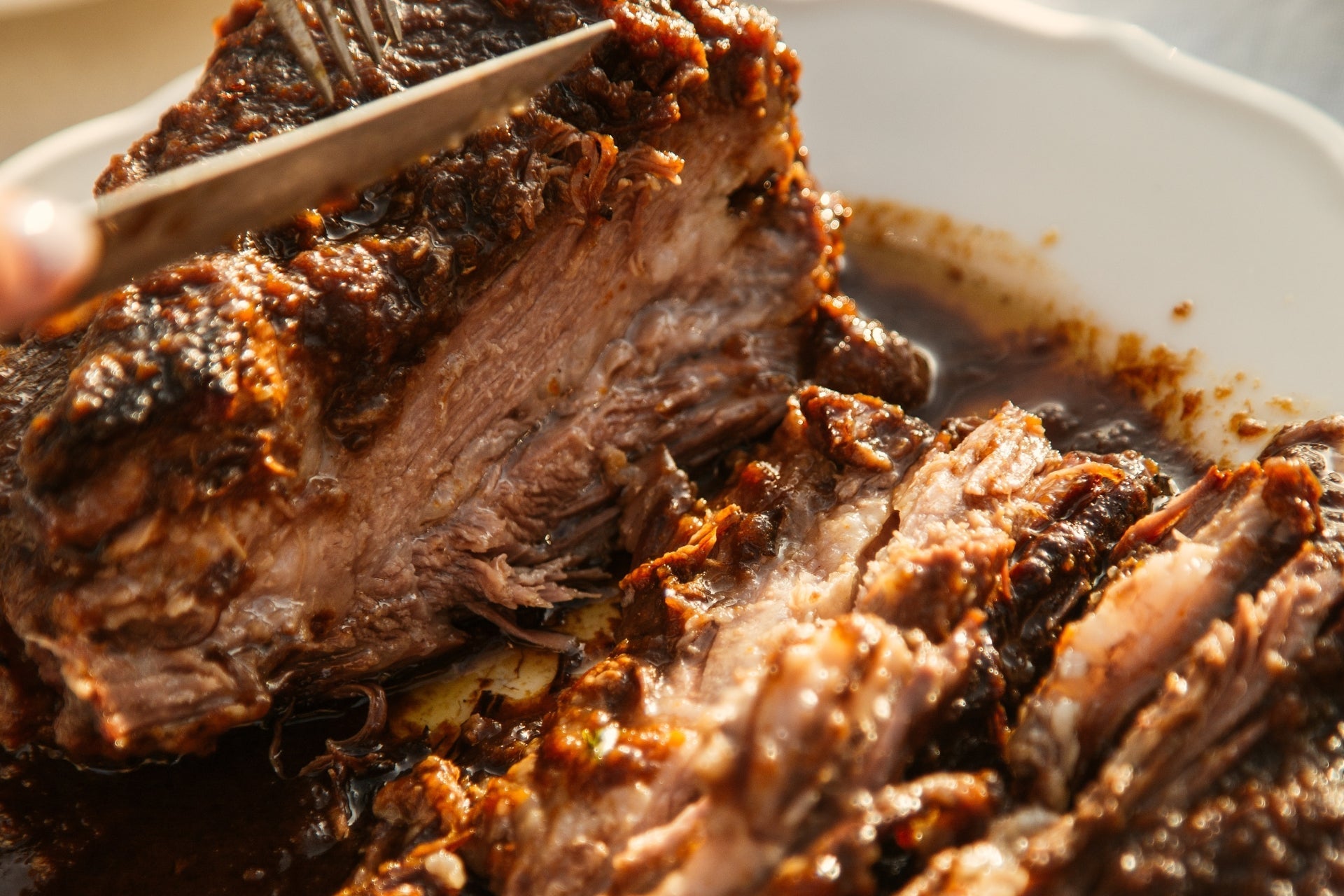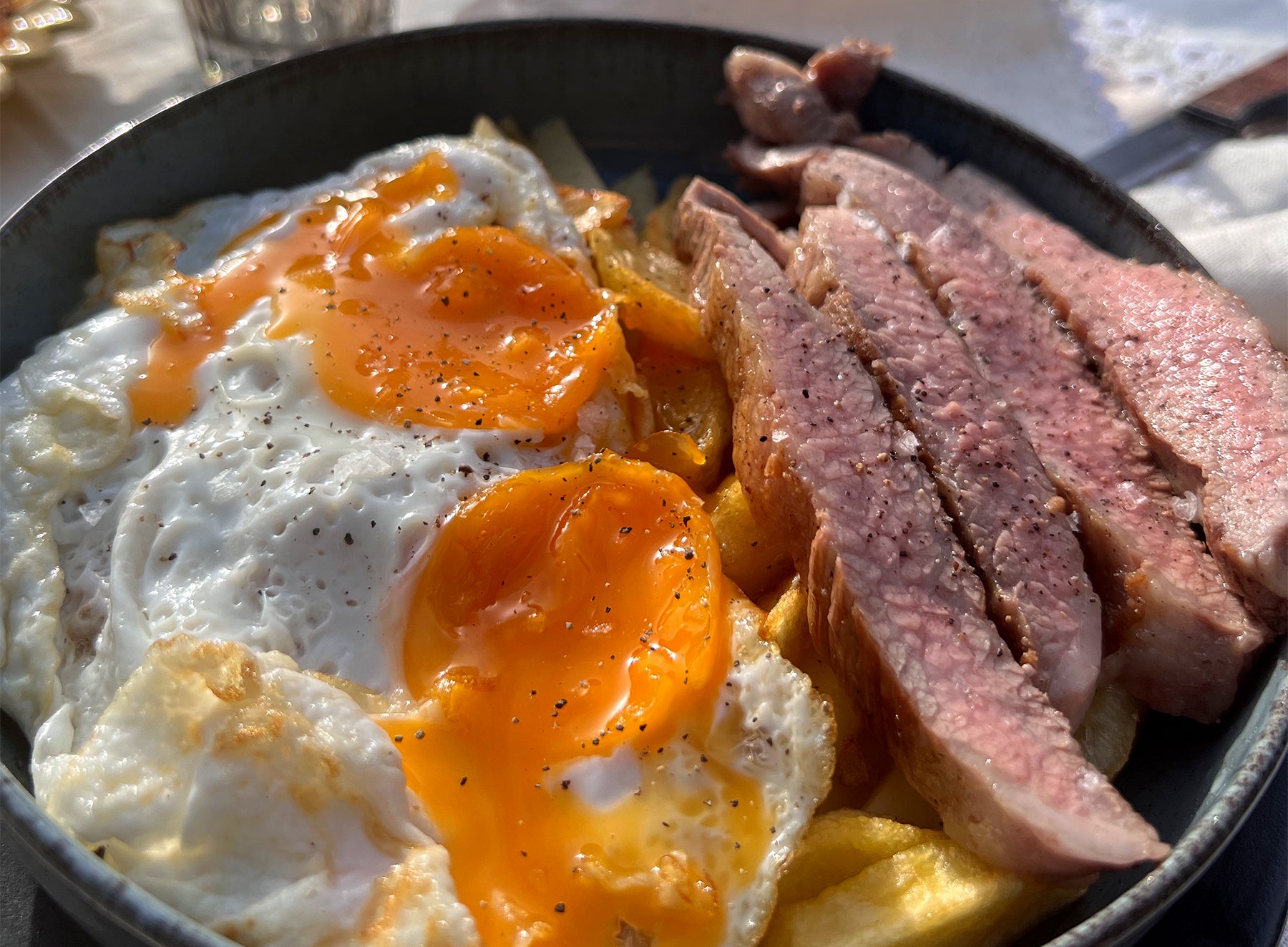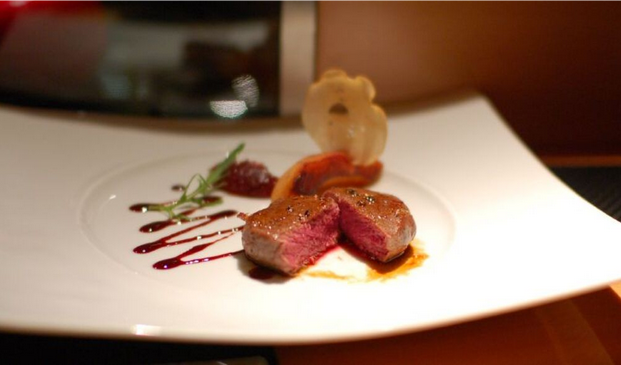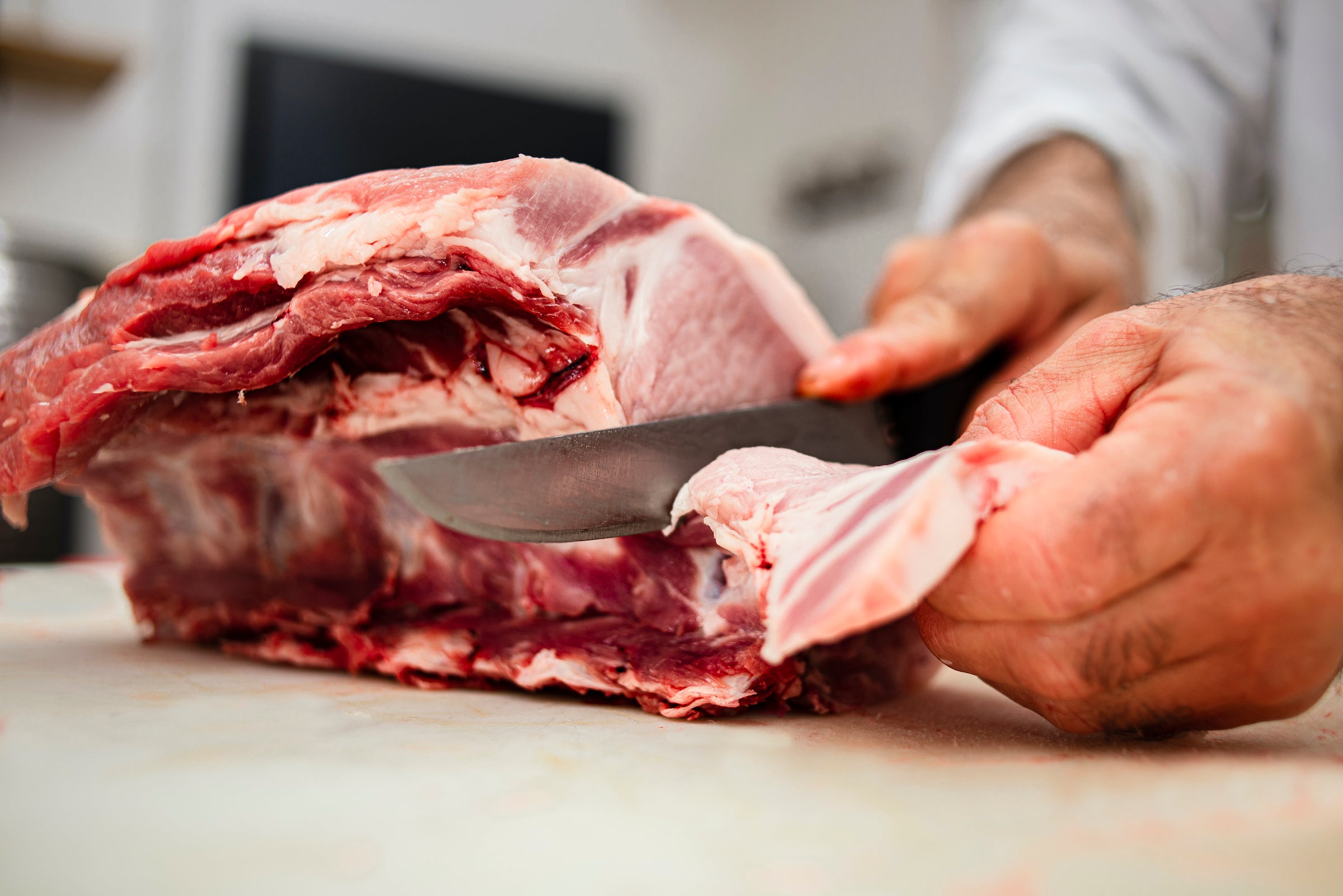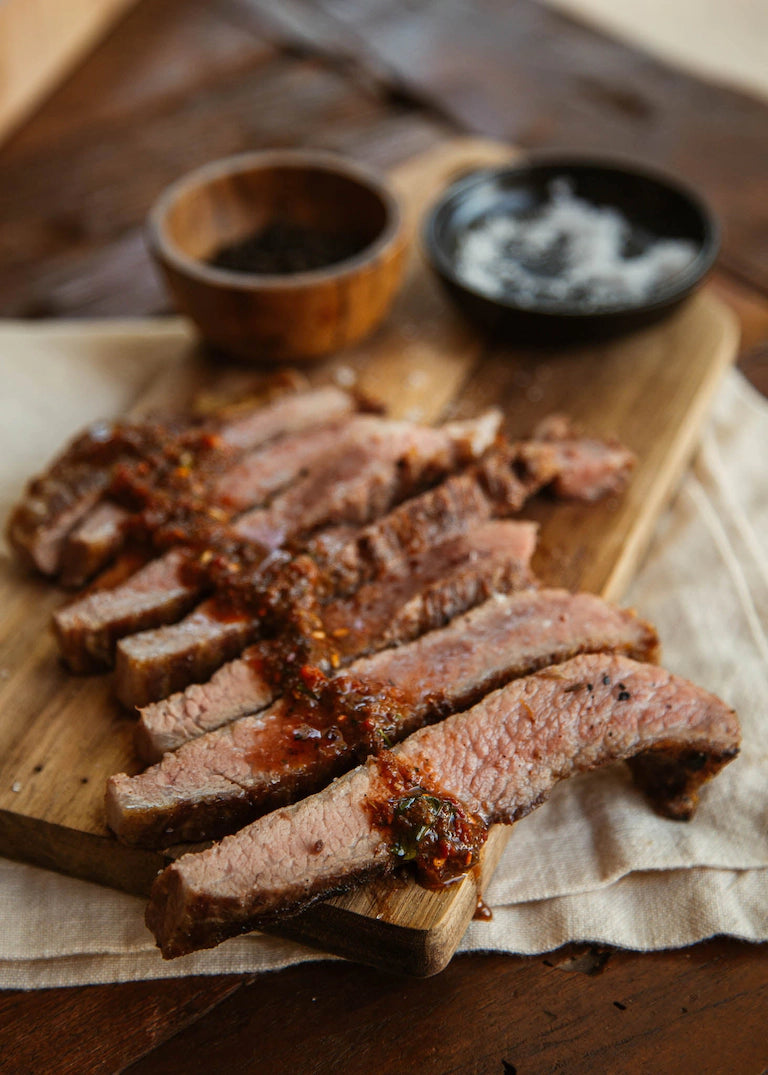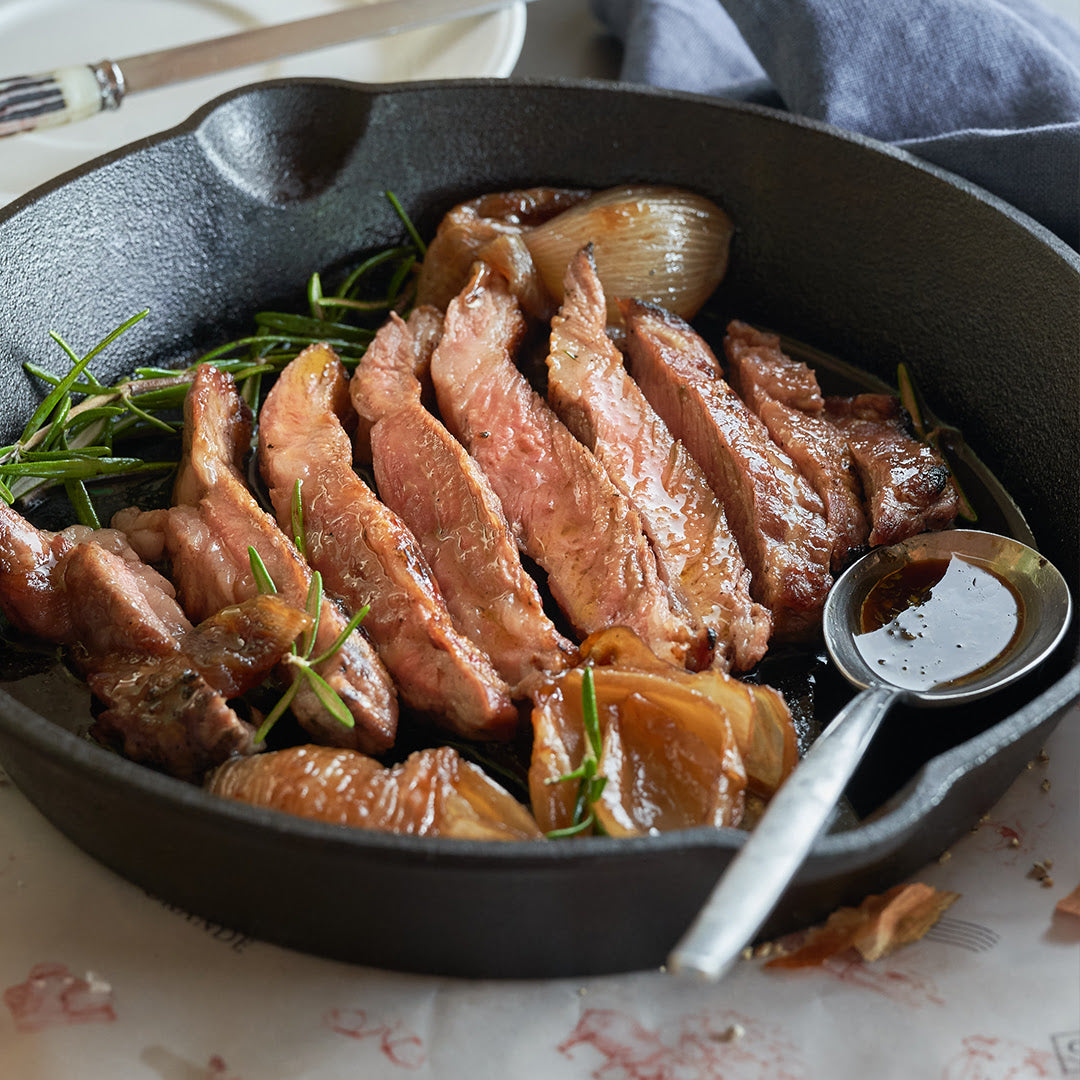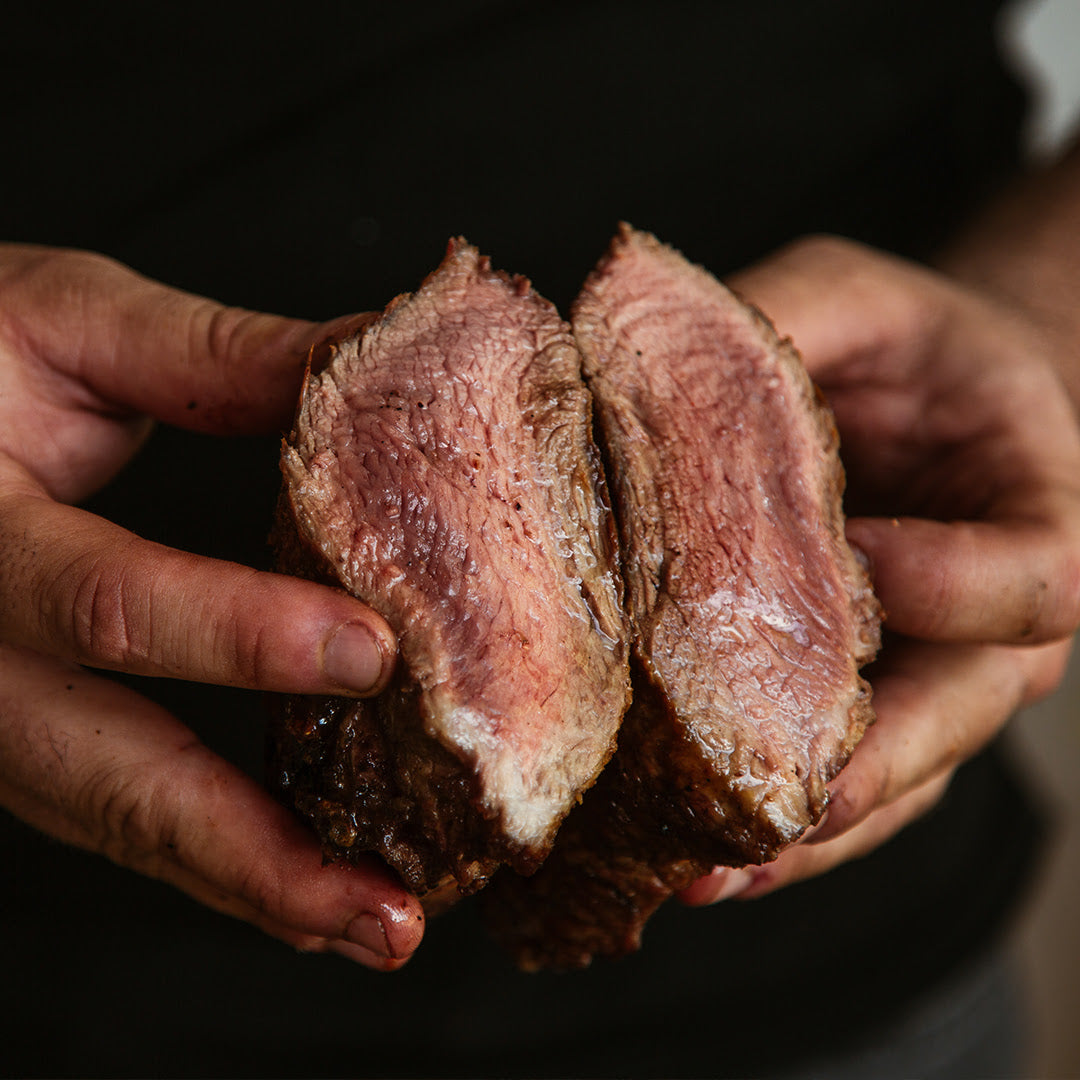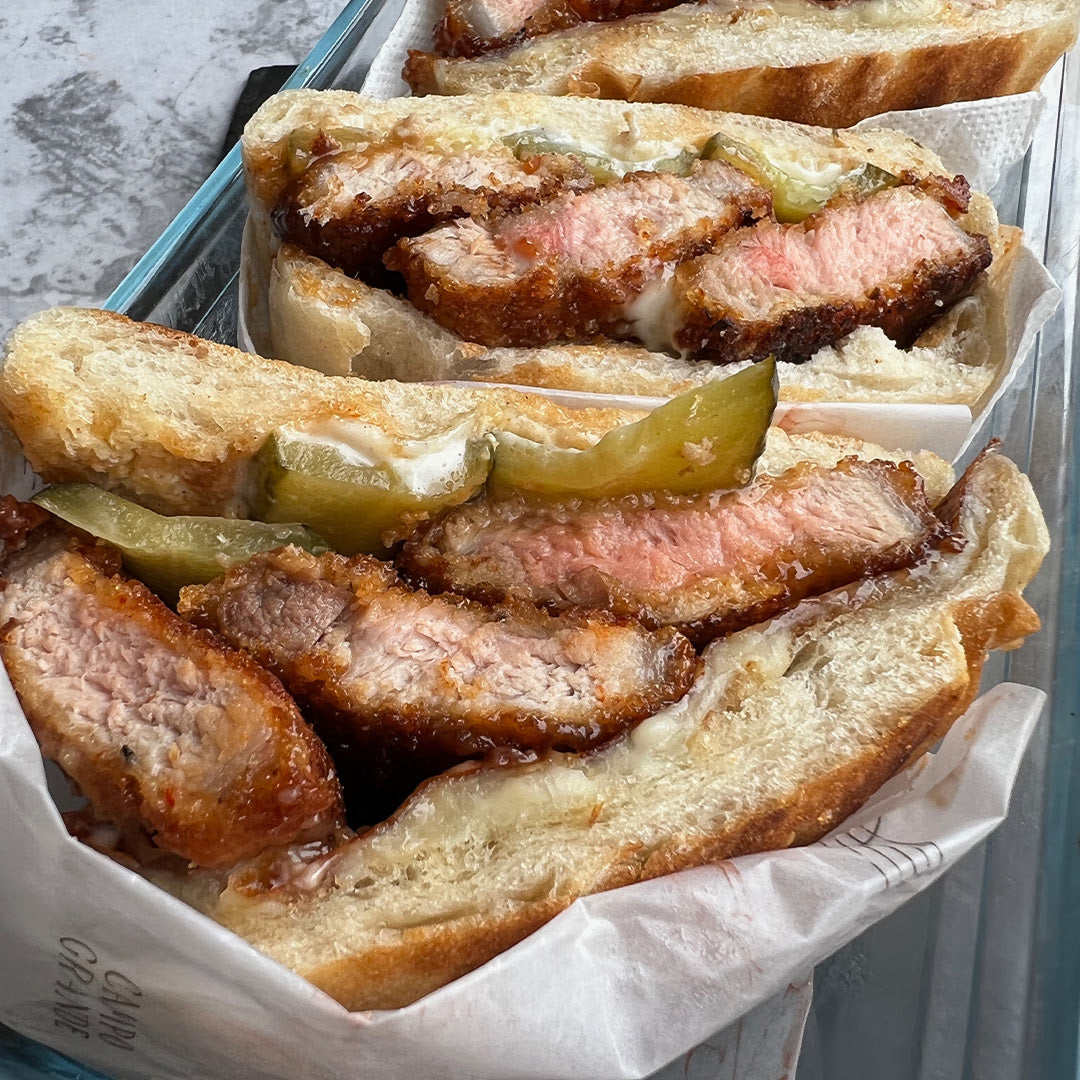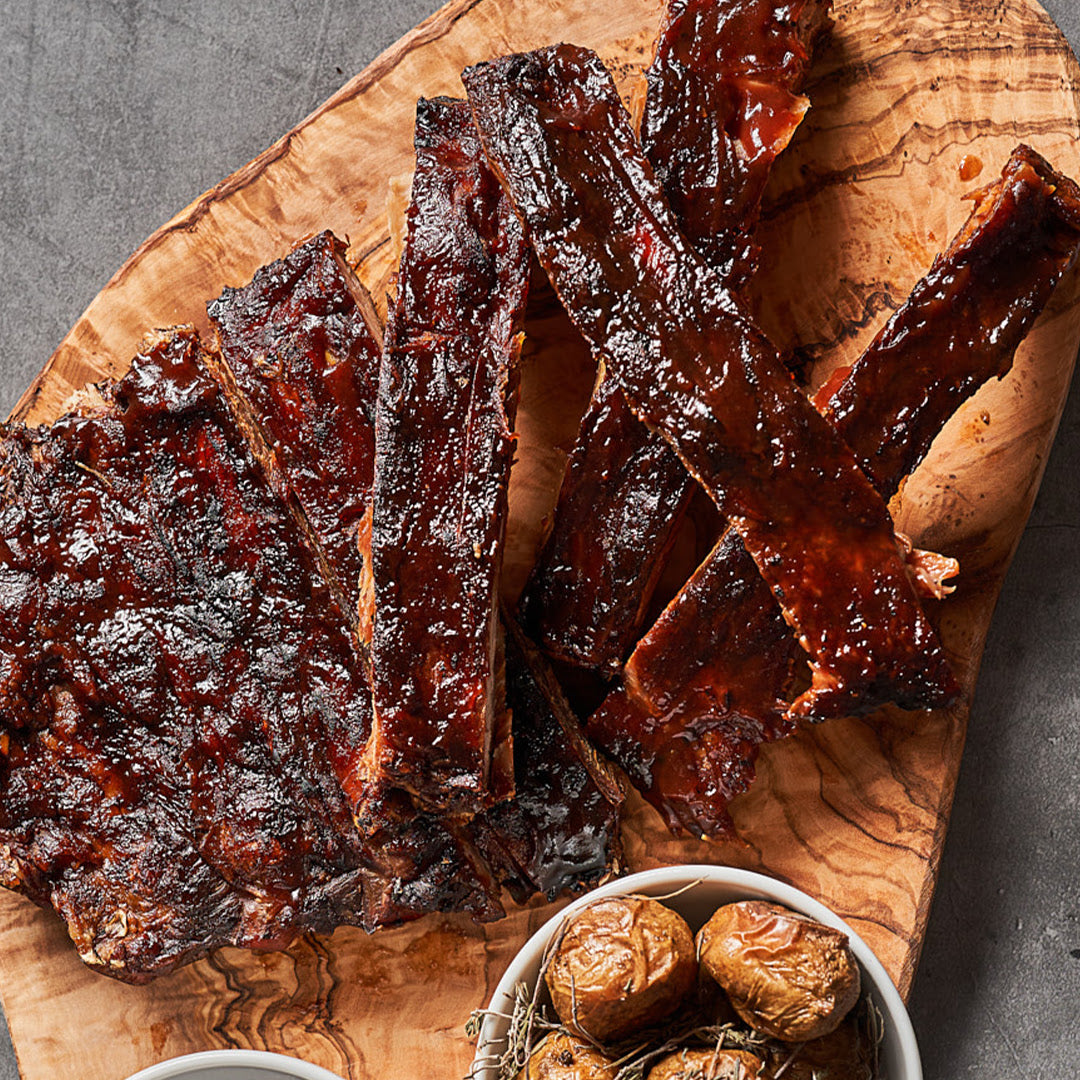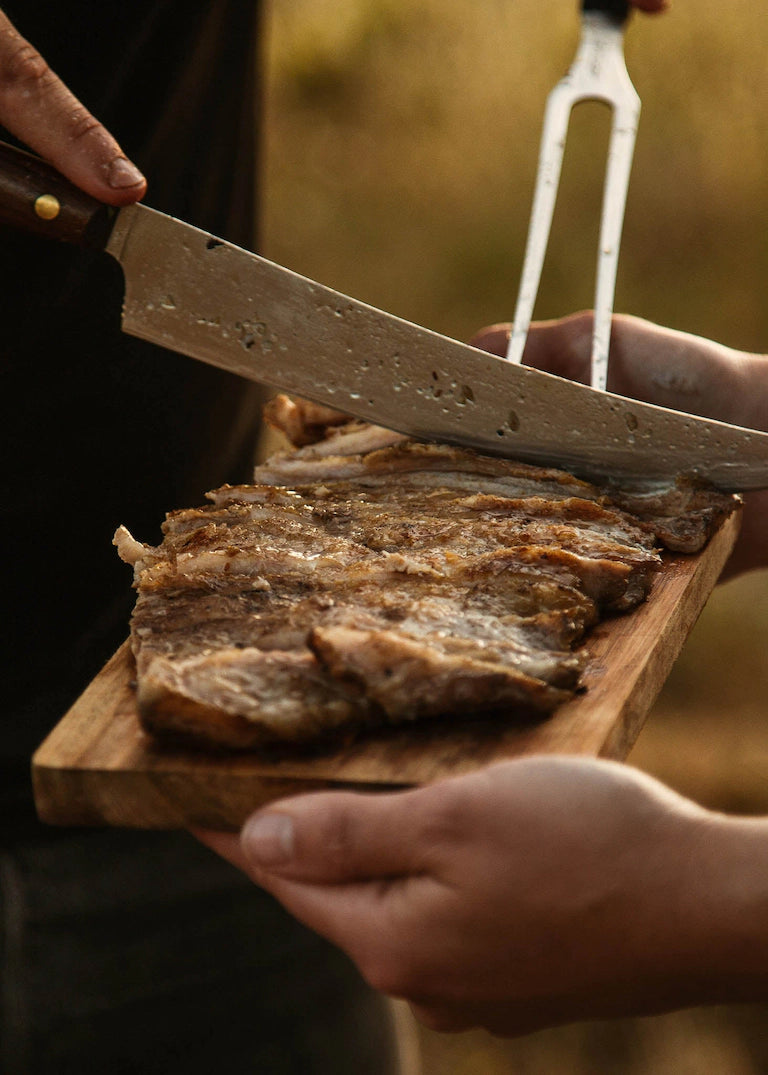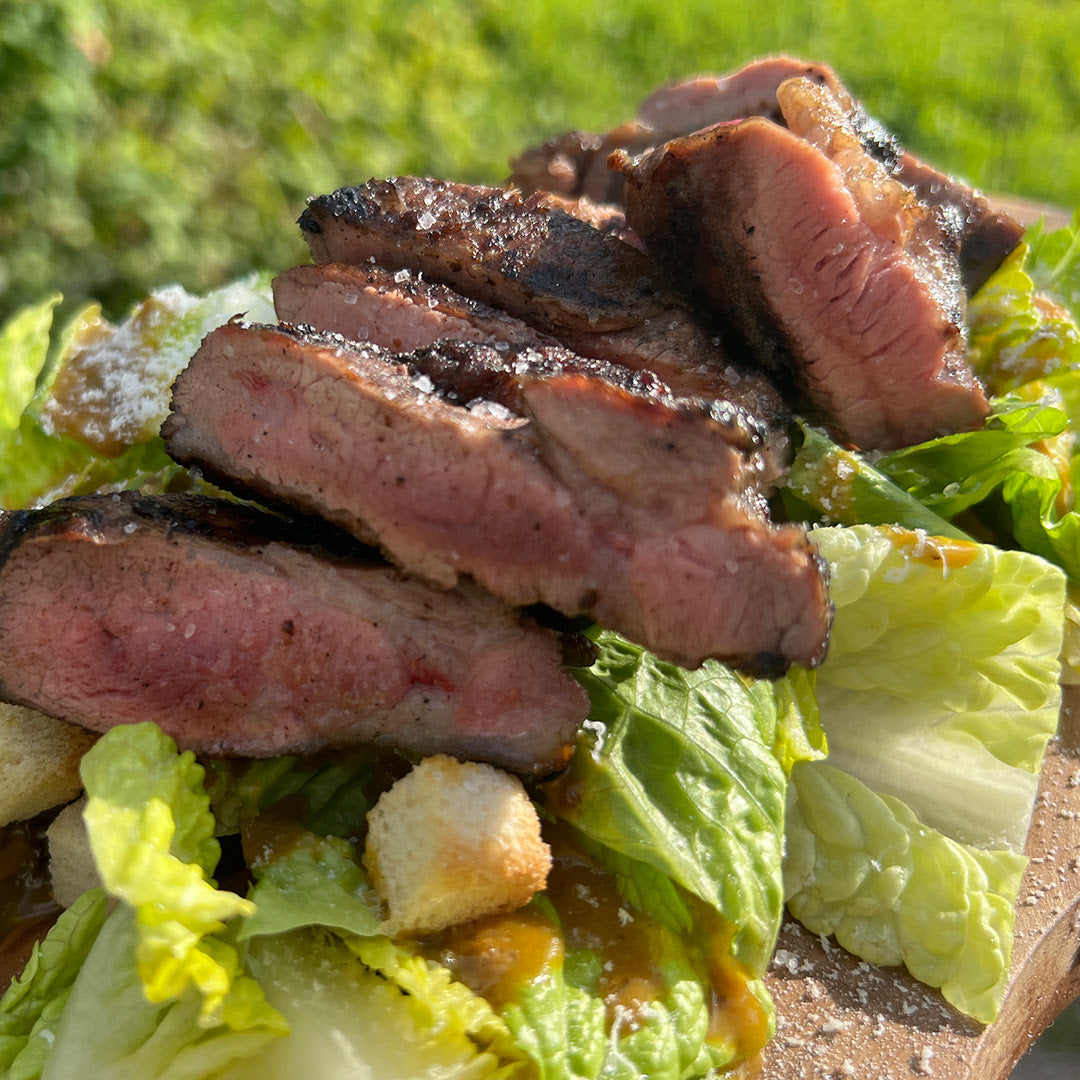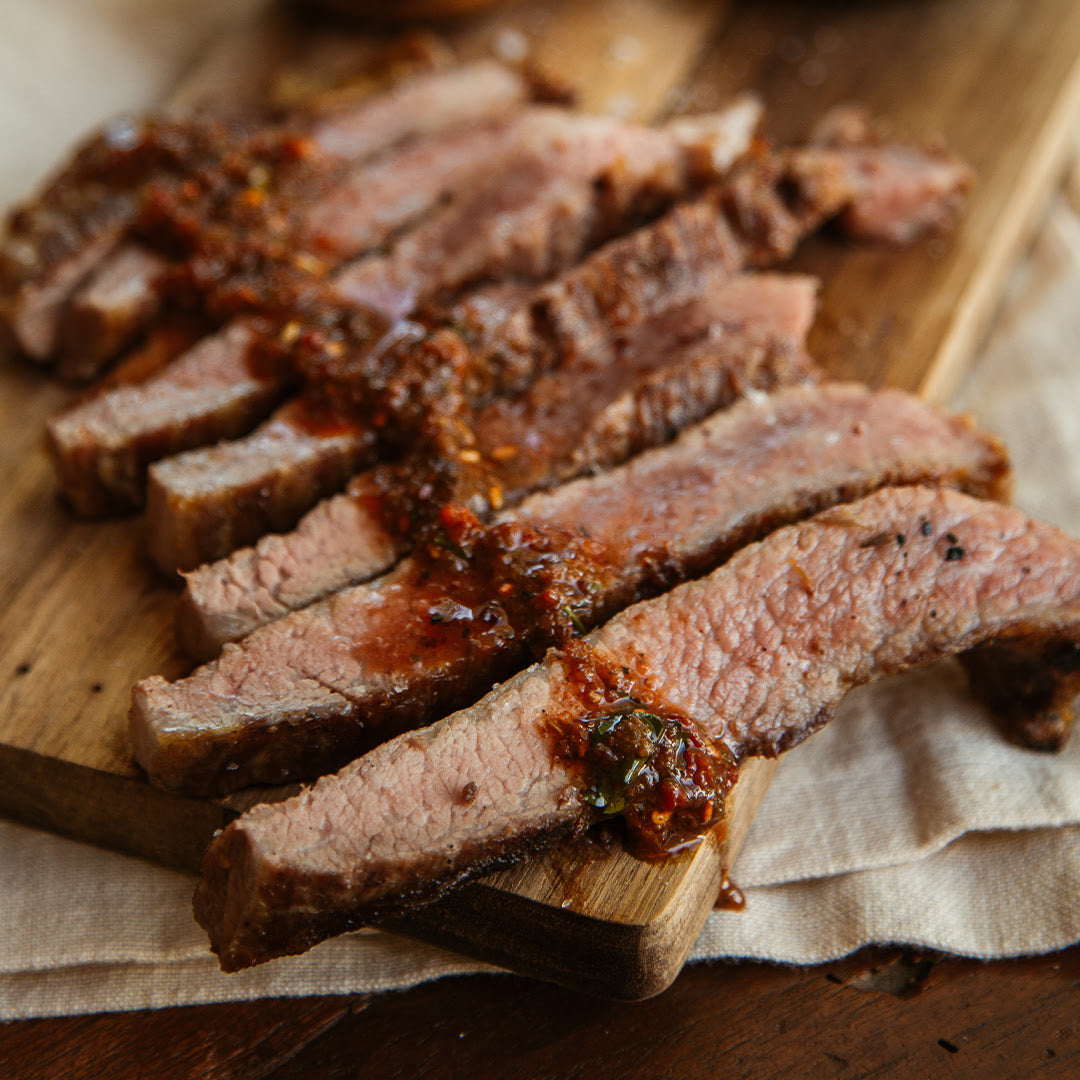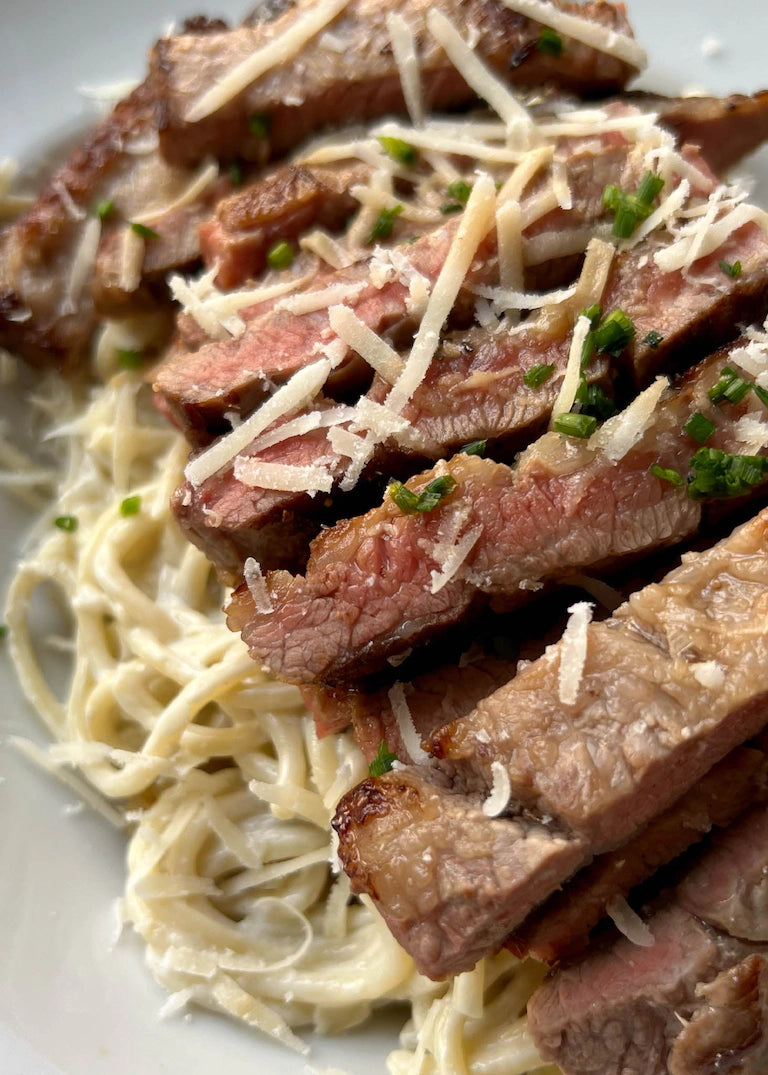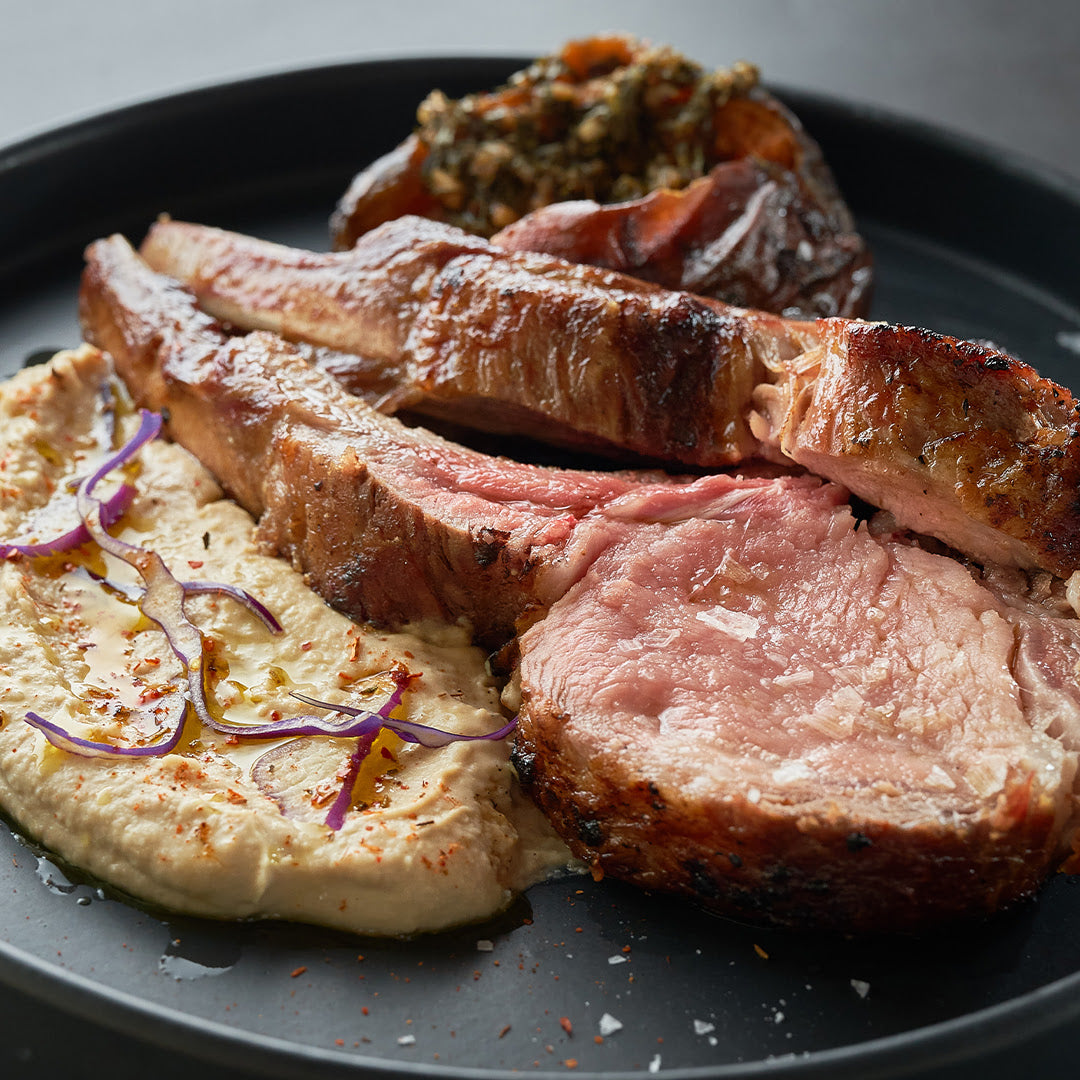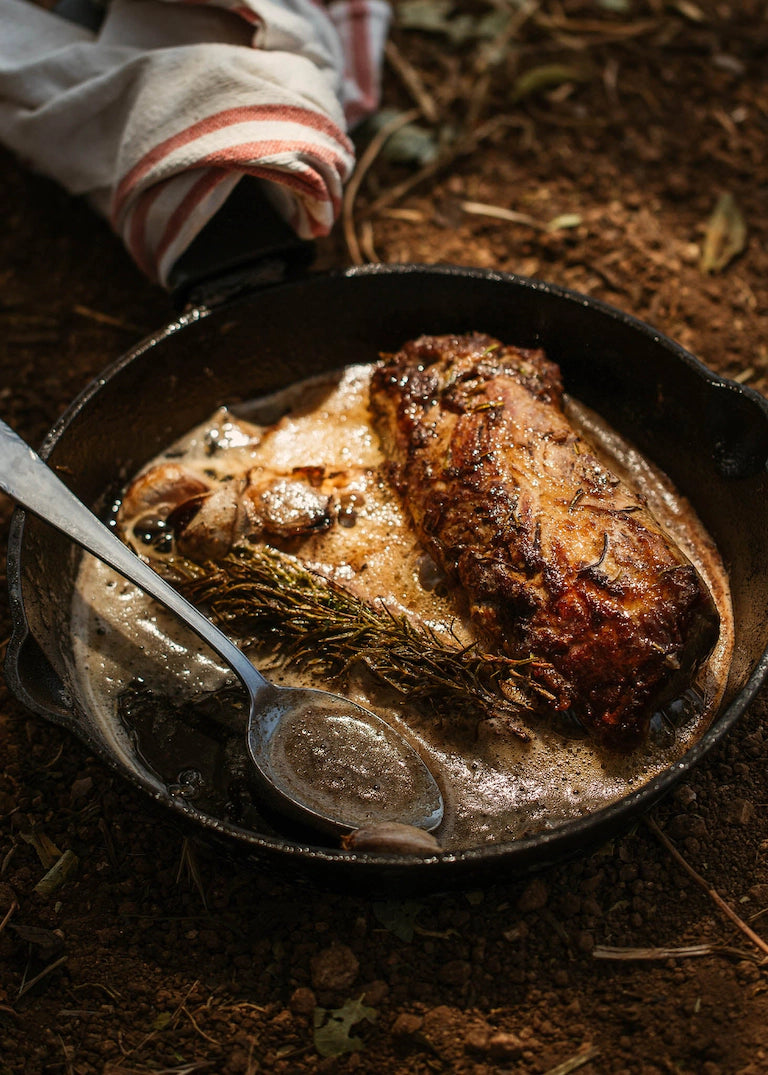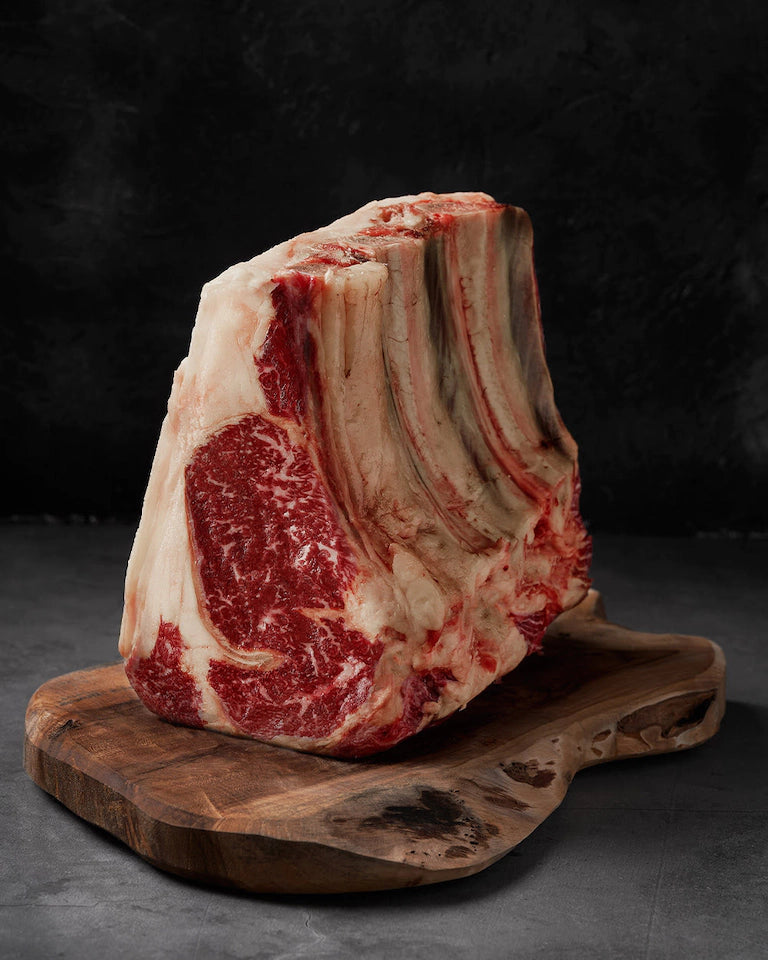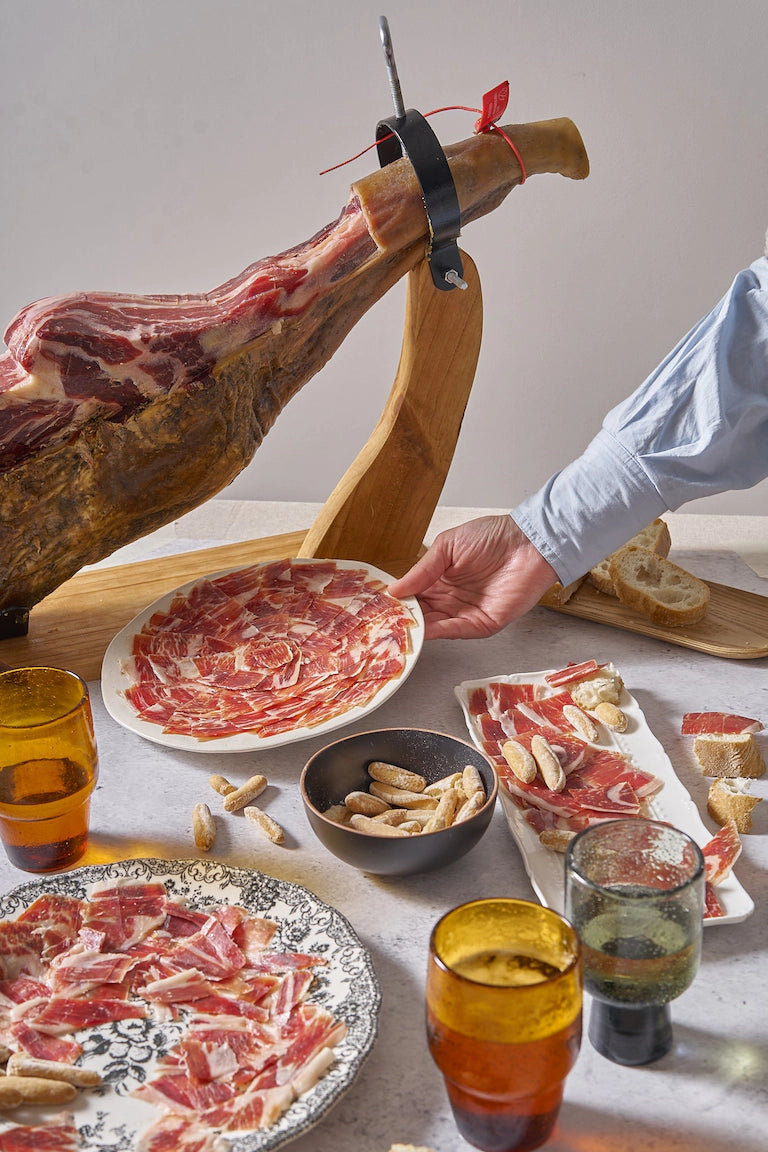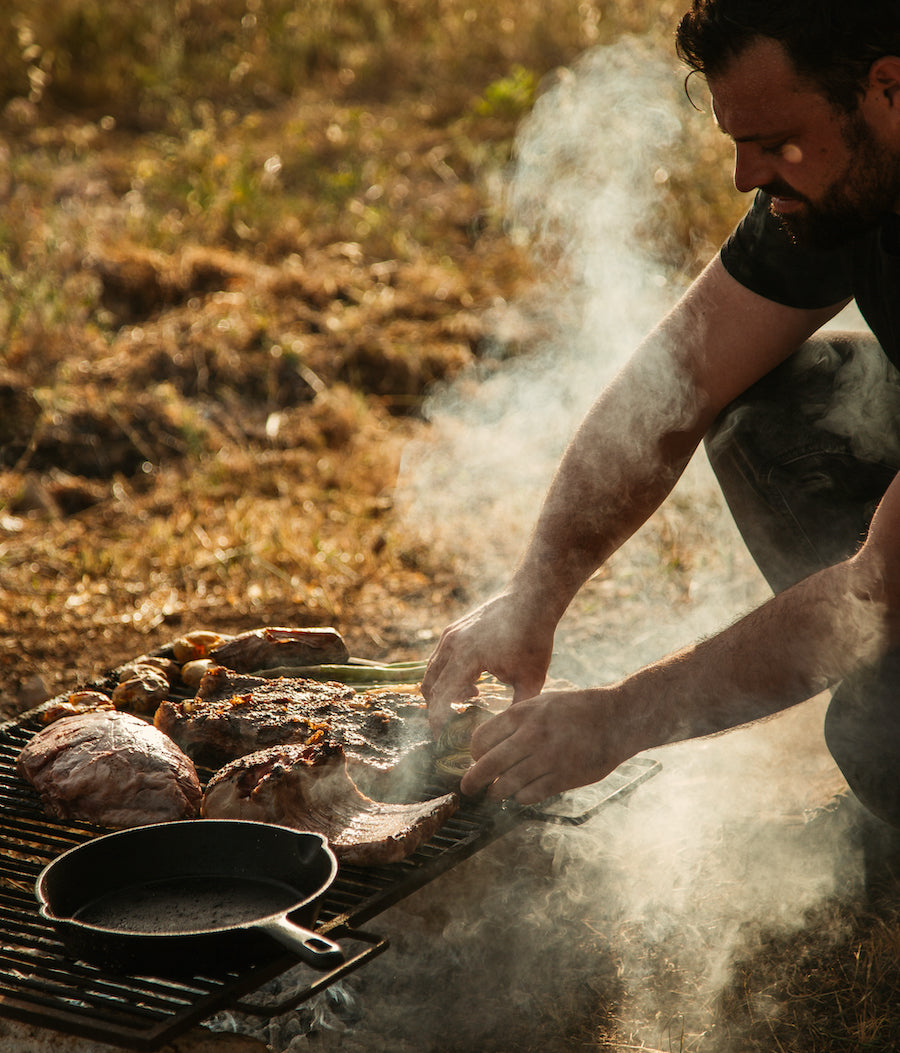
Just receive your box of Ibérico pork and not sure where to start?
The rules for cooking Ibérico pork may surprise you. Ibérico is a totally different animal—it's unlike any other pork product you've ever tried before. The Ibérico pig is also butchered differently in Spain than traditional pork in the U.S., meaning you'll find cuts you've likely never seen.
Whether you're a seasoned cook or totally new in the kitchen, this guide gives you the ins and outs of how to properly cook each cut of Ibérico pork using a variety of temperatures, methods, and cook times.
The Perfect Temperature for Ibérico Pork

The rule of thumb for cooking Ibérico pork is "think pink."
Up until 2006, the USDA recommended cooking whole cuts of pork (basically anything other than ground pork) to an internal temperature of 165º F. But with new research in hand, they made big changes. Now, the USDA recommends cooking pork to an internal temperature of 145º F, with an accompanied 3-minute rest time to help the meat make its way over into food-safe temps and also lock in the juices. That means your pork will still be a little pink in the middle. Which is exactly what we're after.
As with high-quality beef, you really want to hold on to those natural flavors in Ibérico pork—the nutty, earthy nuances and buttery fat. Cook Ibérico too long (even medium-well is too much) and you're practically throwing away flavor.
Cooking Methods for Ibérico
You can cook Ibérico pork using pretty much any cooking method. It all depends on the cut, how much time you have, and what you're after.
Pan-Sear

Pan-searing is all about heating a skillet (preferably cast iron or quality stainless-steel) over high heat and quickly searing the pork on either side. This gets the Ibérico crispy and browned on the outside and leaves the inside ridiculously tender.
While you won't be temping the actual pan, you're ideally getting up to temperatures of 350º-400ºF. For quick-cooking methods we like to use a sure-fire method in which we measure the thickness of the cut: For every 1/2-inch of thickness (or about 1 cm) sear for 2 minutes on each side. A 1-inch thick Presa, for example, should be seared for 4 minutes on each side.
This works best for thinner cuts with lots of intramuscular fats. The best Ibérico for the job?
- Secreto
- Abanico
- Pluma
- Presa
- Pork Belly Steak
- Jowl Secreto
- Flank Steak
- Skirt Steak
- Tenderloin (even better if you slice in medallions)
Quick Grilling

Quickly grilling Ibérico is almost the same as pan-searing but on the grill. The heat is usually a bit more intense, as you're placing the meat right over the coals or flames, so there are some slight differences. This method gives Ibérico those grill marks, that crunchy charred flavor, and keeps the inside of the meat tender.
You want your grill to get into temperatures of 400ºF and up. For this quick-cooking method we use the same system but with a slightly smaller cook time. For every 1/2-inch thickness (or about 1 cm) grill for 1.5 minutes on each side.
Best cuts for the job:
- Secreto
- Abanico
- Pluma
- Presa
- Pork Belly Steak
- Jowl Secreto
- Flank Steak
- Skirt Steak
- Tenderloin
Oven Roasting and Braising

Oven roasting and braising take things down just a notch to medium temperatures. Whether you're dry-roasting or braising in liquids, set your oven to 350ºF. Then weigh your cut and follow this formula: 30 minutes for every pound (about 1/2 kg).
These methods work best with larger Ibérico cuts that can handle more time:
- 4-Rib Rack
- Coppa
- Presa
- Loin Roast
- Tenderloin
Low n' Slow Barbecuing

This isn't about throwing a steak on the fiery grill for a few minutes. It's about grilling with coals and lower temperatures (medium-low) so the meat can take on more of that grilled flavor while also slowly relaxing its fibers and fats into melt-in-your-mouth textures. This works for gas or charcoal grills, along with open-fire methods like hanging and leaning (where the meat is suspended over the coals).
You want your grill or area to be clocking in at 250ºF to 300ºF so you can cook for 3-4 hours without burning or drying out the meat. The internal temperature of Ibérico should hit between 145º and 200ºF for this style of cooking.
Best cuts for the job:
- St. Louis Ribs
- Coppa
- Thick Pork Belly
- 4-Rib Rack
Lower n' Slower Barbecuing & Smoking

This is an even lower and slower style of barbecuing. And it also works for smoking meat as well, whether it's with a smoker or using the grill to smoke. Think southern pork ribs with that bold campfire flavor, or smoked bacon (hello Thick Pork Belly). Here, you want your temps insanely low, at 200ºF to 250ºF and you should let the meat cook between 4 and 8 hours.
The final internal temperature of the Ibérico pork can get up into 200ºF for this style of cooking.
Best cuts for the job:
- St. Louis Ribs
- Coppa
- Thick Pork Belly
How to Know if Your Ibérico Pork is Properly Cooked
So you've followed the rules above but you're still not sure if you've cooked your pork properly. Is it raw? Did you overcook it completely? Here are a few tricks:
Bring to Room Temperature
All of the advice we've given you thus far take into account one very important step: bringing the meat to room temperature. For thinner cuts, this shouldn't take too long, around 15 minutes depending on the temperature of your kitchen. But for thicker cuts, you may need to remove the meat from the fridge 30 minutes to 1 hour before you start cooking. When every part of the meat at the same temperature, the pork will cook evenly.
Cooking Thinner Cuts of Pork

These cuts are a bit less forgiving if overcooked. Granted, they're always going to be tasty (because it's Ibérico), but to really harness their most delicious powers, you really want to be careful about not overcooking.
Here's the rule for thin cuts:
- Cook over high or medium-high heat.
- For every 1/2-inch thickness (or about 1 centimeter), cook it for 1.5-2 minutes per side, depending on the cut and your preference.
- To check for doneness use a meat thermometer. The meat should register at 145ºF.
- No thermometer? Use the pointer finger of your left hand to touch the soft, meaty part of your palm (under the thumb) and compare textures with the Ibérico cut you're cooking:

- When in doubt, always remove the pork from the heat earlier than you think. You can always throw it back into the pan if it needs a little more time.
Cooking Medium to Thick Cuts of Pork

Large and thicker cuts are more forgiving, and they also have more range in weight.
Here's the rule for medium to thick cuts:
- Cook over medium or low heat.
- For every 1 pound of meat, cook for 30 minutes (or 1 hour for every kilogram, depending on how you're measuring).
- To check for doneness use a meat thermometer. The meat should register at 145ºF or a max of 200ºF for slow-cooked thick cuts.
- No thermometer? You can also prick the meat using a fork or knife. If it releases a lot of juice, it's likely still raw in the middle. Keep cooking. If you see just a little bit of juice, it's ready to go.
A Go-To Chart for Cooking Ibérico Pork

